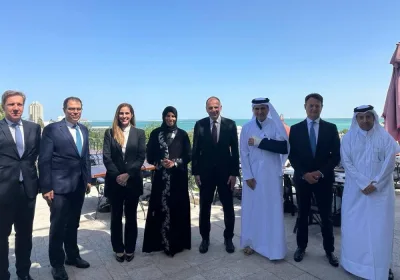Qatar’s prudent fiscal management has again become evident from the country’s public debt that is expected to peak this year may close at a “very much manageable” 28% of its GDP in 2016.
According to a senior economist with BMI Research, Qatar’s public debt is likely to be $74bn this year, which he said “is very much manageable” for the government.
BMI Research’s Emerging Markets analyst Olivier Najar points out Qatar held an estimated $260bn through its sovereign wealth fund in 2015, more than three times the amount of its debt.
Although oil prices are expected to gradually rebound over the next several months as the global surplus slowly gets used up, economists say Qatar does not need “as high prices” as some other GCC states (for example Saudi Arabia) to balance its budget.
And with hydrocarbon prices forecast to increase gradually, Qatar’s fiscal outlook will improve, without Doha having to implement wide austerity measures, Najar recently told Gulf Times.
For this reason, BMI Research expects Qatar’s budget balance to “turn positive” as early as 2017 and that the country will face “only one year” of budget deficit.
In BMI’s view, the Qatari government would cover its 2016 deficit by “a mix” of domestic and foreign borrowing, as well as using some of its foreign currency reserves.
Qatar’s real GDP is expected to grow nearly 6% in both 2016 and 2017 as the country expands in investment spending in non-hydrocarbon sector.
Qatar economic growth, which was subdued in 2015 partly due to weaker activity in the oil sector, will continue to be driven by the non-oil sector.
The non-hydrocarbon sector will remain “the engine of growth”; some economists say and expect it to grow at 9.9% in 2016 and 10% in 2017.
HE the Minister of Finance Ali Sherif al-Emadi had announced in December 2015 that the budget would sustain spending in key sectors such as health, education, infrastructure and transport, with special focus on railways and other projects tied to the 2022 World Cup.
“We believe that this strategy is sustainable for Doha, and that it will not significantly impact the country’s sovereign outlook,” BMI Research said.
Qatar is expected to remain one of the fastest-growing economies in the Middle East on the back of strong investment income and continued government spending on tourism and infrastructure projects despite lower hydrocarbon prices.
The government’s fiscal buffers and sizeable assets will sustain public investment, which in turn will support non-hydrocarbon growth.
Another push to the Qatar economy could come from population growth, which is expected to reach 2.8mn by 2018- a 75% increase in nearly eight years.
Arguably, Qatar is one of the most financially secure economies, anchored by long-term liquefied natural gas (LNG) contracts and strong fiscal reserves that provide a cushion against a protracted commodity downturn.
Qatar’s outlook for the coming years is seen as one that is moving to a more sustainable level of growth, tighter fiscal discipline and continued diversification of the economy. This will help the nation weather the current low oil prices and global economic instability.



